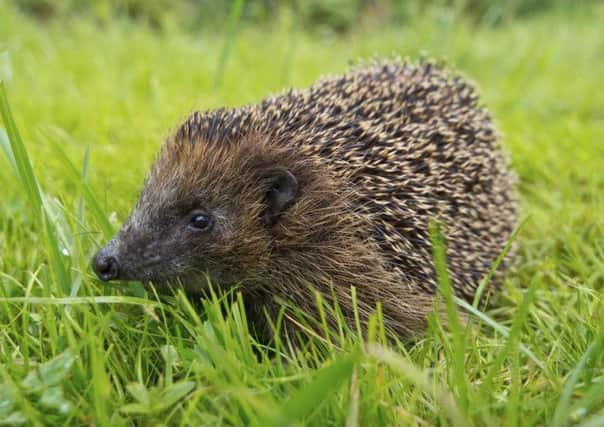Britain’s wildlife suffers as impact of flooding continues


WITH many homes wrecked and livelihoods ruined, it’s only right our thoughts and concerns should be with the human victims of the recent winter flooding.
But, as the initial shock of the recent deluges subsides, the grimy tide mark of the flooding is revealing another sinister legacy; a terrible cost on our wildlife and countryside.
Advertisement
Hide AdAdvertisement
Hide AdSpecies throughout the food chain, from insects to small mammals and birds, are thought to have drowned or died from a lack of food. Conservationists are also worried that pesticides and toxic chemicals could spread contaminated floodwater to sensitive ecosystems causing further damage.
Some of our best-loved mammals have suffered most from the flooding. It’s feared the hedgehog, which is already in decline, may have been particularly hard hit.
Fay Vass, chief executive of the British Hedgehog Preservation Society, explains: “Sadly, the floods will have had an impact on an already declining hedgehog population. Nests will have been flooded and hedgehogs drowned. For a species in decline in the UK at the same rate as tigers are globally, it is a very concerning situation indeed.”
Other mammals are also at risk as Johnny Birks, chairman of the mammal society, points out: “The winter weather this year has been exceptional in parts of the country and although mammals have mechanisms for coping with winter in the British Isles, extreme weather events like this, with torrential rain, high winds and unusually mild conditions, can have unusual impacts which lead to reduced survival and breeding success.
Advertisement
Hide AdAdvertisement
Hide Ad“Low lying areas are likely to stay under water longer, which means many rodents and insectivores without higher ground to escape to will likely drown.”
Despite generally being at home in water, otters are at risk from the flooding too.
“Otters are particularly vulnerable because the young are born in and around January and cannot yet swim. If they are flushed out of a holt, the mother has to move them from a safe established home to find another safe, warm, dry holt. Cubs are less likely to survive in these circumstances if they cannot yet swim.”
Badgers have been seen more frequently at roadsides in the past few months, as they move away from waterlogged setts. The challenge to find dry bedding and a dry sett to keep vulnerable cubs warm places additional pressure on breeding success.
Advertisement
Hide AdAdvertisement
Hide AdBats have also suffered as many of the old, rotten trees in which they roost, hibernate and shelter, have been blown down in the high winds.
Wildlife in flooded areas faces a three-pronged attack.
Firstly, there is the threat of drowning. Most species can cope with spells of wet weather, but the wettest winter on record has dumped an unprecedented amount of water onto the countryside. Alongside small mammals, a huge number of hibernating bumblebees, and caterpillars are likely to have perished in this way.
Hibernating animals like hedgehogs and dormice that have managed to avoid drowning, will then wake to find there is little or no food available, with habitats still underwater. Then there’s the threat that dangerous chemicals and fertilisers could spill and contaminate the floodwater – wiping out more wildlife in its wake.
“All it would take is for one container of concentrated pesticide to empty into floodwater and there could be death and destruction of aquatic life over many hectares of floodplain,” says Matt Shardlow, chief executive of insect charity Buglife.
Advertisement
Hide AdAdvertisement
Hide AdConservationists are concerned about the potential impact of the flooding on populations of earthworms.
Not only are worms a key food source for species such as hedgehogs, badgers, thrushes and blackbirds but they also play a vital underground engineering role in keeping the soil flood-resistant.
“There will be many areas where much of the soil fauna has drowned. Where earthworm populations have been drowned it is likely to take several years for populations to build up,” says Shardlow.
“Healthy earthworm populations keep soil aerated and free draining. So the flood risks more compaction of the soil with increased risk of further flooding as a result.”
A period of sustained, dry weather is now desperately needed by homeowners and wildlife alike, to ensure the legacy of the washout winter of 2014 doesn’t become even more costly.